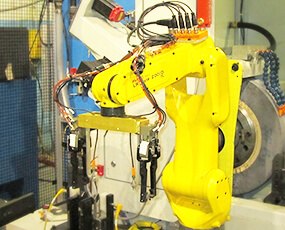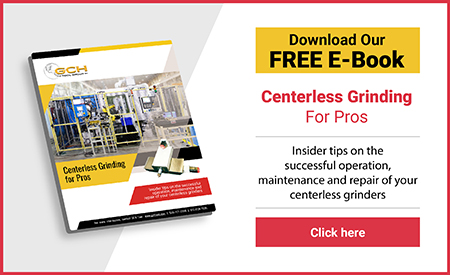How Automation and Loaders Can Improve the Efficiency and Productivity of Your Grinding Operations

Automating your grinding operations could be the key to unlocking unprecedented levels of efficiency and productivity. Automation refers to the use of machinery to carry out tasks normally performed by humans, while loaders are devices designed to move materials, such as raw materials or finished products, from one place to another.
By integrating automation and loaders into your grinding operations, you can streamline your production processes, reduce labor costs and improve the quality and consistency of your finished products. Of course, the type of automation and loaders you choose will depend on the specific needs of your business, but with the right tools, you can achieve significant gains in your bottom line.
Types of Automation and Loaders Used in Grinding Operations
Let’s start by reviewing some of the most common types of automation and loaders for grinding.
- Robotic Loaders: These automated systems consist of a robotic arm that is programmed to move parts from one station to another. This type of grinding automation is ideal for high-volume operations, as the robot can quickly and accurately pick up parts and place them into the grinding machine. The robotic loader can also be programmed to recognize different types of parts and adjust its movements accordingly.
- Conveyor Belt Loaders: These loaders for grinding use conveyor belts to move parts. They’re typically used for low-volume applications because they require less programming and setup than robotic loaders. Additionally, conveyor belts can handle a variety of part shapes and sizes, making them well suited for a wide range of applications.
- Bar Feeders: Bar feeders use bars or rods to transport different parts or components. These are often used when the part being ground has complex geometries or requires precise positioning, as they can accurately position the part within the grinder while also providing support during the grinding process.
- Pallet Loaders: Pallet loaders use pallets or trays for parts transport. Ideal for high-volume applications, they can quickly and efficiently move large numbers of parts through the grinding process without having to be reprogrammed each time a new batch is loaded onto the pallet loader.
- Overhead Gantries: Overhead rails and gantries move parts from one location to another. They are useful for high-precision applications, allowing for extremely precise positioning and movement of parts within the grinder while also providing support during the grinding process.
Benefits of Using Automation and Loaders in Grinding Operations
There are a number of benefits of automating grinding operations, including:
- Increased Productivity: Using automation in grinding can increase productivity by reducing the amount of time it takes to perform a task. Automated systems can be programmed to work at a much faster rate than manual labor, allowing for greater efficiency and throughput. Moreover, automated systems are able to operate without breaks or rest periods, meaning they can work around the clock if needed.
- Improved Quality: The use of automation and loaders helps to improve quality control by reducing the potential for human error. Automated grinding machines are able to monitor their own performance and adjust as needed, ensuring that parts are machined accurately and consistently every time. This improved accuracy leads to higher quality parts with fewer defects, resulting in fewer rejects and less waste.
- Reduced Costs: Automated systems require less energy than manual processes, resulting in lower energy bills for businesses. In addition, since they’re able to complete tasks more quickly than manual processes, it reduces labor costs and increases efficiency overall.
- Improved Safety: Grinding machine automation can help to improve safety by eliminating the need for manual handling of materials or hazardous machinery components such as blades or cutters. Automated systems are designed with safety features such as sensors that detect potential hazards before they become a problem, helping to protect workers from injury or illness.
- Increased Flexibility: Automation allows businesses to easily adjust their production schedules without needing additional personnel onsite, while automated loaders provide quick access to different types of materials needed for production runs without having employees manually move them around the facility each time a change is needed.
- Reduced Environmental Impact: Automated systems are designed with energy-efficient usage features such as automatic shut-off capabilities when not in use, which helps conserve resources while still providing reliable performance when needed.
How to Choose the Right Automation and Loader System for Your Grinding Operations
When considering what system to implement, think about the type of grinding operation you have. Is it a cylindrical grinding, surface grinding or centerless grinding operation? Furthermore, you should consider the volume of production you plan to handle with your new system and how much you are willing to spend.
Keeping these factors in mind will ensure that you choose a system that fits your specific needs. These tips for implementing automation and loaders in grinding are critical for a successful transition to a better, more efficient method of operation.
Increase Efficiency and Productivity through Grinder Automation and Loaders
Grinder automation and loader systems aim to enhance production speed, increase product consistency, decrease labor costs and more. With all of the clear benefits that these systems provide, it’s certainly worth researching how to automate grinding operations at your place of business.
GCH Tool Group has you covered! Over the years, we have upgraded existing part-handling systems and created loaders and automation systems for almost every type of grinder on the market, including centerless, ID, OD, double-disc and surface grinders.
Contact us for a quote today and unleash your operation’s true potential.

